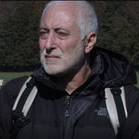The Contribution of Trees to Increase Resilience of Urban Areas to Climate Change
A special issue of Forests (ISSN 1999-4907). This special issue belongs to the section "Urban Forestry".
Deadline for manuscript submissions: closed (20 November 2021) | Viewed by 6053
Special Issue Editor
Interests: vegetation dynamics triggered by human disturbances and restoration ecology; vegetation and floristic mapping and analysis by G.I.S. tecniques; monitoring plant species and communities; biodiversity conservation and management with particular reference to rare and threatened with extinction plant species; statistical analysis of environmental data
Special Issue Information
Climate change is decreasing human wellbeing in urban areas: the rising of temperatures coupled with aridity increase the heat island effect, the extreme weather events cause floods and the stormwaters runoff increases water pollution. The number of people living in metropolitan areas has exceeded that of people in agricultural areas and this trend continues. So, in the future the climate change effects in urban areas will affect the well-being of more and more people.
Green Urban Infrastructures (GUIs) are urban environments where the built system is coupled with plants, mainly trees. GUI can mitigate the climate change effects in urban areas enhancing their resilience and improving quality of life of inhabitants. Trees play a pivot role in urban forests, gardens, parks or even as road trees, providing ecosystem services that are not simply aesthetic or recreational. Trees change microclimatic conditions decreasing overall temperature thanks to evapotranspiration and shadowing, improve air quality by removing particulate, decrease stormwater runoff thanks to root absorption.
Although trees and plants are generally the main part of GUIs, the choice of species and the design of GUIs often takes more into account aesthetic criteria than their functional role as providers of ecosystem services. In this respect more attention on both physiological and morphological features of trees should be paid to better plan GUIs able to mitigate climate change effects in urban areas.
In this special issue we invite all scientists with different skills to submit papers dealing with the contribute of trees to be used in GUIs to mitigate climate change effects in urban areas. Papers submitted in this special issue are expected to give practical information that could be used by other professional figures usually interested in GUIs such as engineers, urban planners and stakeholders to help them in their design choices.
Dr. Sandro STRUMIA
Guest Editor
Manuscript Submission Information
Manuscripts should be submitted online at www.mdpi.com by registering and logging in to this website. Once you are registered, click here to go to the submission form. Manuscripts can be submitted until the deadline. All submissions that pass pre-check are peer-reviewed. Accepted papers will be published continuously in the journal (as soon as accepted) and will be listed together on the special issue website. Research articles, review articles as well as short communications are invited. For planned papers, a title and short abstract (about 100 words) can be sent to the Editorial Office for announcement on this website.
Submitted manuscripts should not have been published previously, nor be under consideration for publication elsewhere (except conference proceedings papers). All manuscripts are thoroughly refereed through a single-blind peer-review process. A guide for authors and other relevant information for submission of manuscripts is available on the Instructions for Authors page. Forests is an international peer-reviewed open access monthly journal published by MDPI.
Please visit the Instructions for Authors page before submitting a manuscript. The Article Processing Charge (APC) for publication in this open access journal is 2600 CHF (Swiss Francs). Submitted papers should be well formatted and use good English. Authors may use MDPI's English editing service prior to publication or during author revisions.
Keywords
- Green Urban Infrastructure
- Climate change
- Urban areas
- Biodiversity
- Urban forest
- Nature-based solutions
- Ecosystem services





